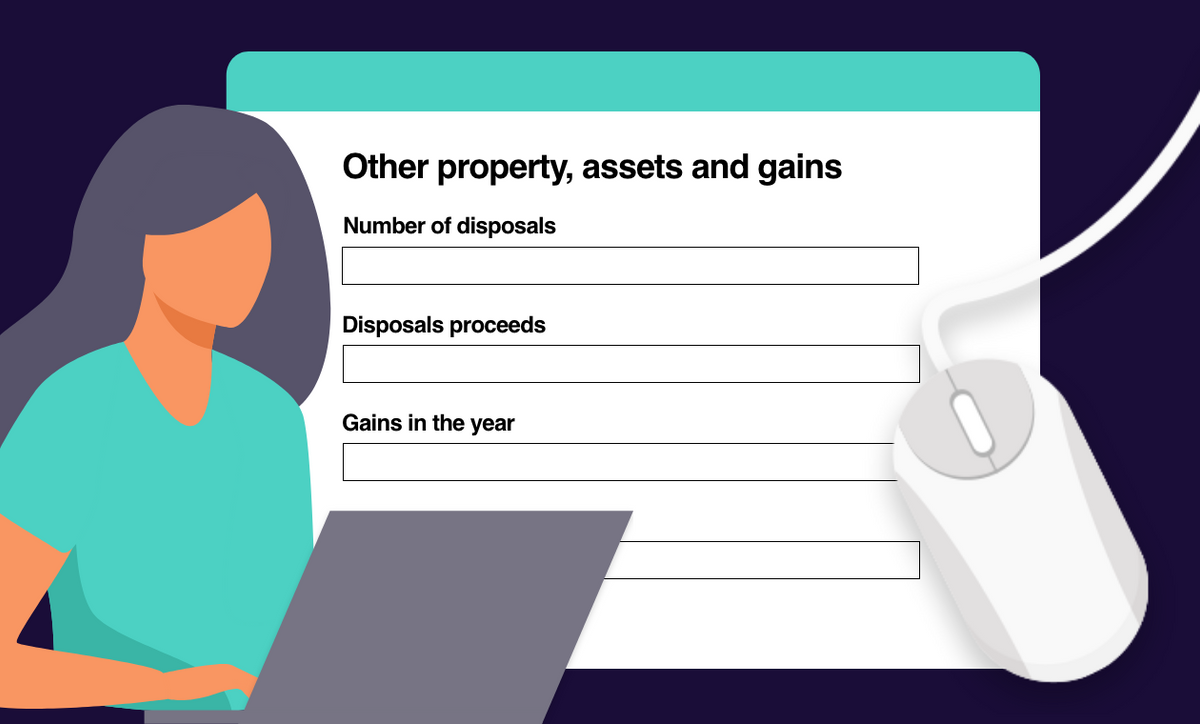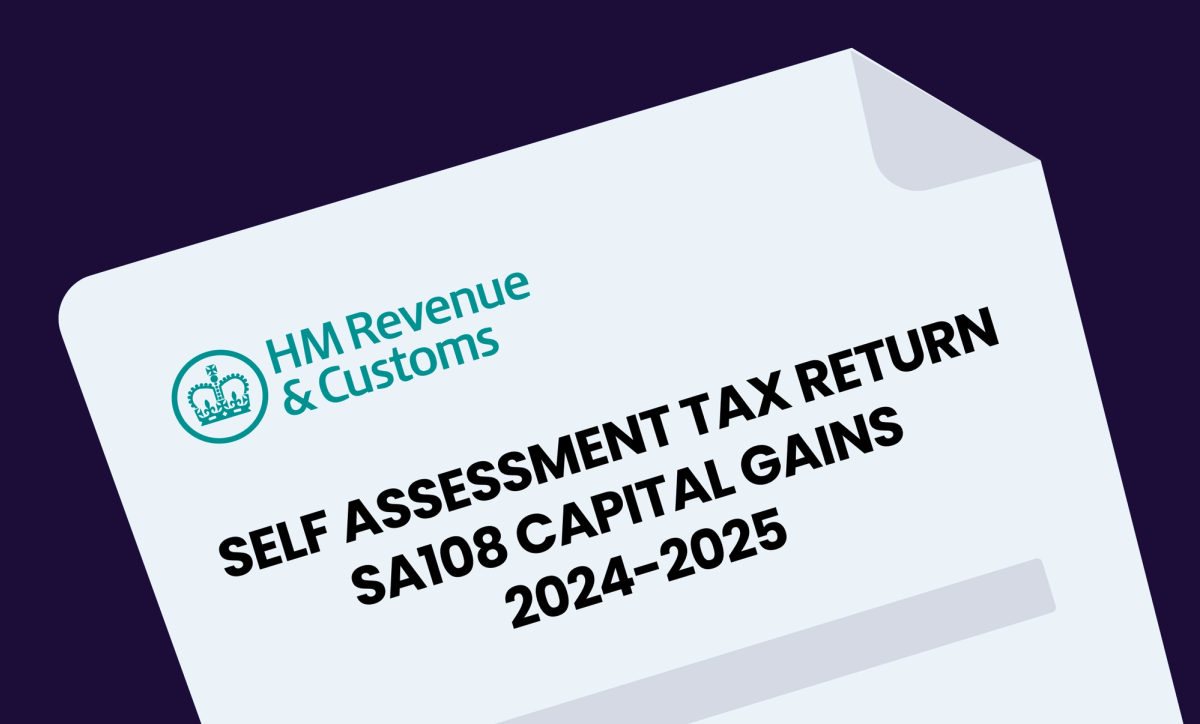
The 2024/25 tax year brought an important change for UK taxpayers: a higher tax rate for both tax brackets came into effect partway through the year, making this a "split" tax year. If you’re investing in crypto, this could affect how much Capital Gains Tax (CGT) you owe.
In this blog, we break down what the split tax year means, how it affects crypto disposals, and how Recap can help you stay compliant and in control.
TL;DR
- The 2024/25 tax year is split into two parts due to a mid-year tax rate change
- This affects the CGT you might pay on crypto gains
- Recap automatically accounts for the split when estimating your tax liability
This guide is intended as a generic informative piece. This is not accounting or tax advice that can be relied upon for any individual’s specific circumstances. Please speak to a qualified tax advisor about your specific circumstances before acting upon any of the information in this article.
What is a "split" tax year?
The UK tax year runs from 6th April to 5th April the following year. Capital gains that exceed the annual exemption amount are taxed at a rate dependent on total annual income. In October 2024, during the Autumn Budget, the new Labour cabinet announced a change to capital gains tax rates, effective immediately.
This means the tax year is effectively split into two parts:
- 6th April 2024 to 29th October 2024 – existing capital gains tax rate
- 30th October 2024 to 5 April 2025 – new capital gains tax rate
Capital gains tax rates for 2024/2025 tax year
| Taxable Earnings | Tax Bracket | CGT Rate: 6th April 2024 - 29th October 2024 | CGT Rate: 30th October 2024 - 5th April 2025 |
|---|---|---|---|
| £12,300 to £50,270 | Basic Rate | 10% | 18% |
| £50,270+ | Higher Rate | 20% | 24% |
How does this affect crypto disposals?
If you’ve sold, swapped, or spent crypto during the 2024/25 tax year, here’s what to keep in mind:
- The total gain from your crypto disposals across the tax year is still calculated as normal, using HMRC’s share pooling method.
- But when working out your CGT bill, depending on when gains were realised, different tax rates may apply.
- Taxable disposals on or before 29th October, will be taxed at the existing rate of 10% or 20% depending on whether you’re a lower or higher rate taxpayer.
- Gains made on or after the 30th October 2024 will be taxed at the new higher rate of 18% or 24%.
Example: If you realised a gain of £5,000 in May 2024 and another £5,000 in February 2025, you’ll pay the lower rate of tax on the gain made in May and new tax rate on the gain in February.
How to report capital gains for the split tax year on the self assessment tax return
The 2024/25 Self Assessment Tax Return went live on 6th April 2025 including a new section dedicated to crypto within the capital gains pages.
There aren’t separate fields for declaring capital gains before and after the change to the tax rate, so you’ll need to calculate capital gains at the original 10% or 20% tax rate and then apply an adjustment for the additional 4% or 8% on gains made after the split.
It’s a bit fiddly - but Recap can help you figure this out!
HMRC Capital Gains Tax adjustment calculator for the 2024/25 tax year
You can also work out the adjustment by using HMRCs CGT adjustment calculator. This is particularly useful for anyone with additional capital gains outside of crypto.
How Recap handles the split tax year
We’ve updated Recap to support the split tax year, so you can:
- See your total realised gains before and after the rate change.
- Estimate your tax liability based on both.
- Understand how timing affects your CGT
Log in to Recap to view your gains and estimate your tax bill – with all the complexity of the 2024/25 tax year taken care of.
Before the split:
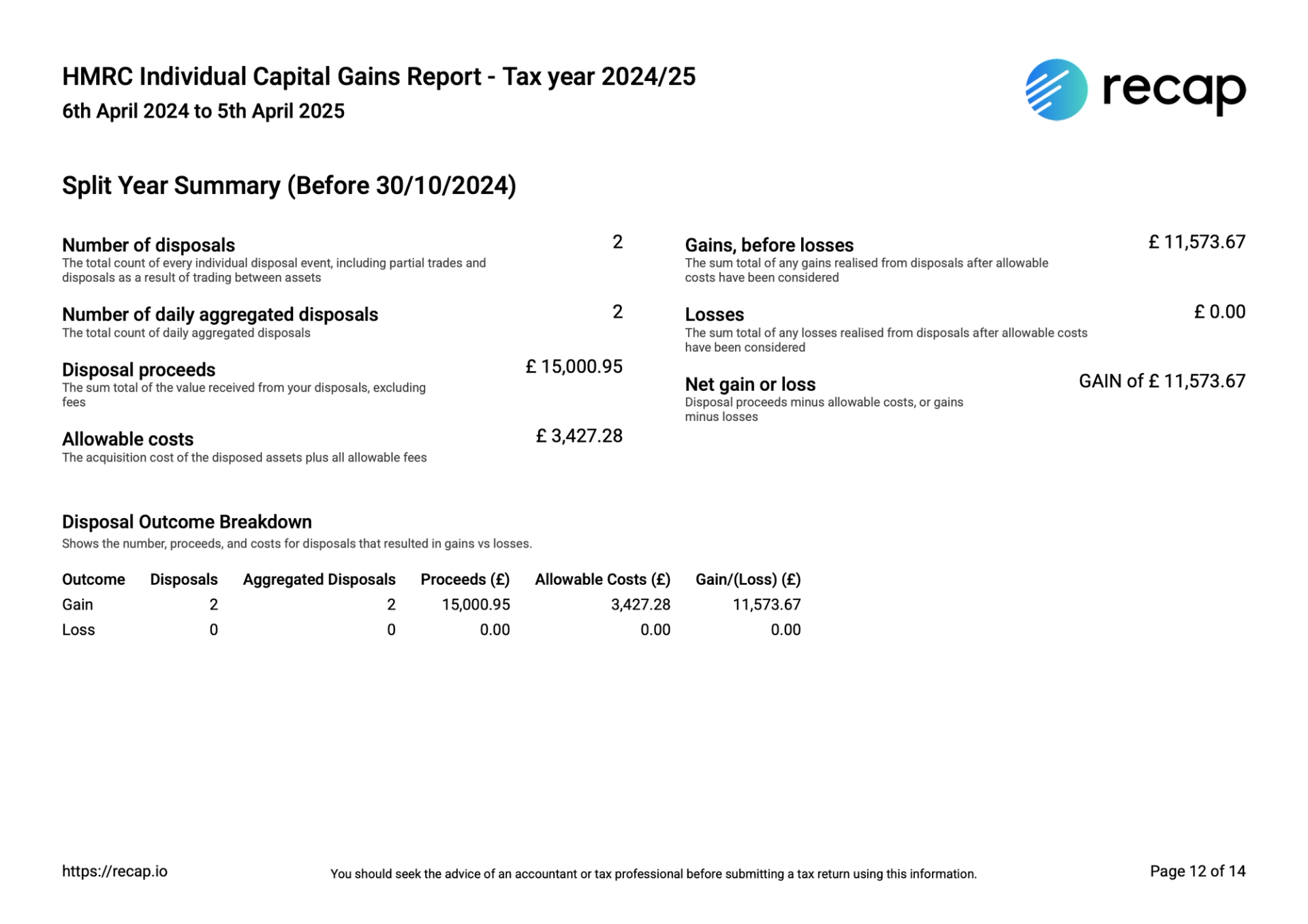
After the split:
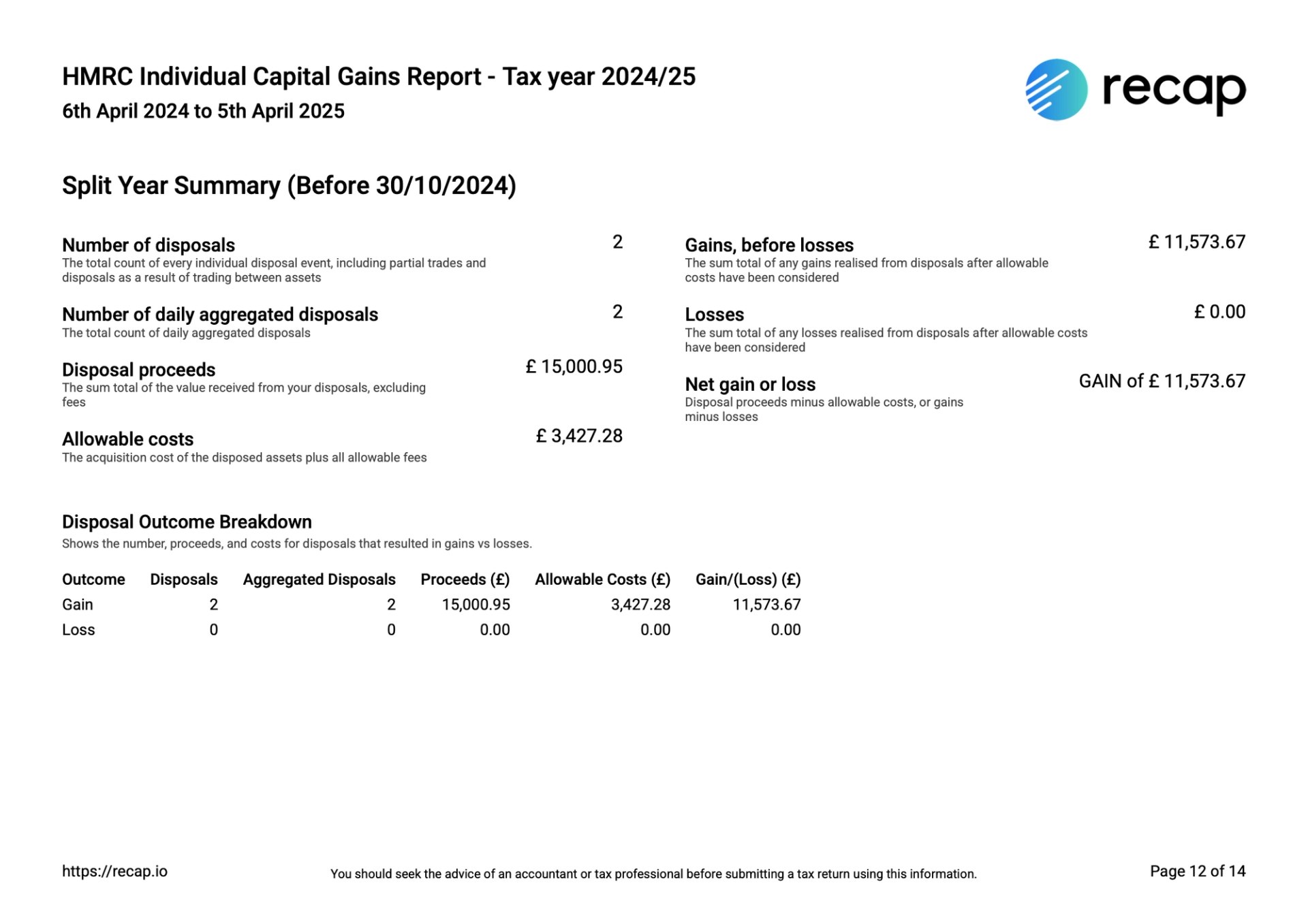
Full Year breakdown:
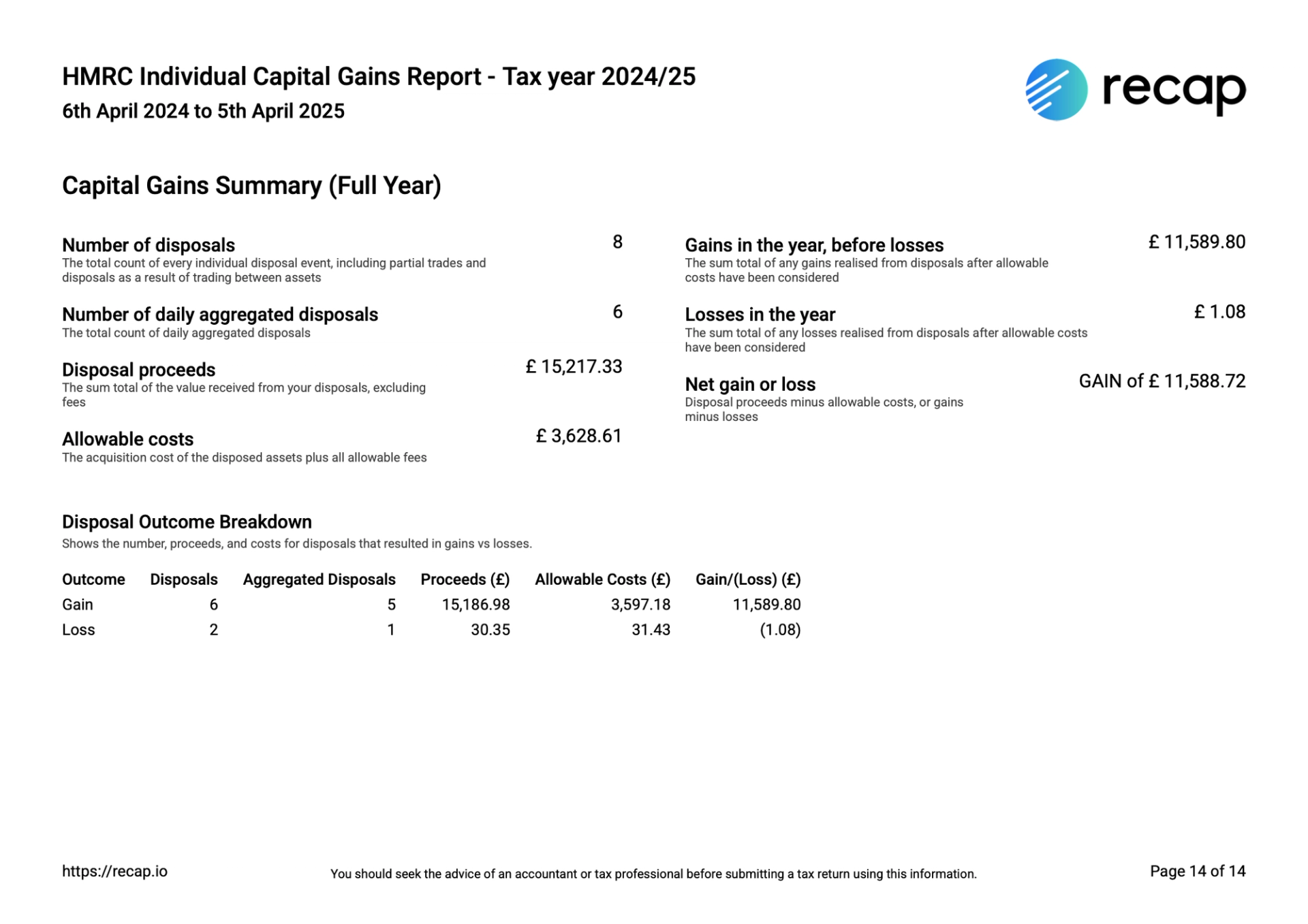
Detailed Breakdown for Accountants and Filing Software
Recap now provides a clear breakdown of your capital gains across both parts of the split tax year to ensure accurate reporting and simplify your workflow. This includes:
- Pre- and Post-Rate Change Summaries: Clearly separated gains before and after 30th October 2024, with the correct CGT rates applied
- Disposal Outcome Breakdown: Each crypto disposal is timestamped and categorised by type (sale, swap, spend), showing the gain/loss and tax rate used
This structured output is essential for accountants using filing software like IRIS and TaxCalc, and helps ensure that your submission is both accurate and HMRC-compliant.


